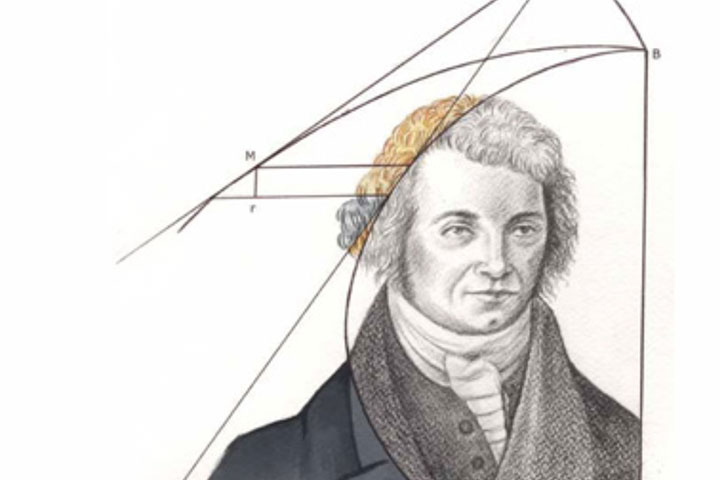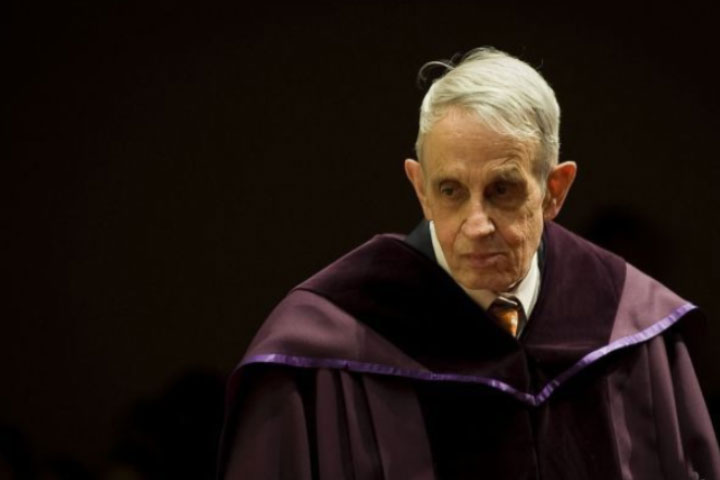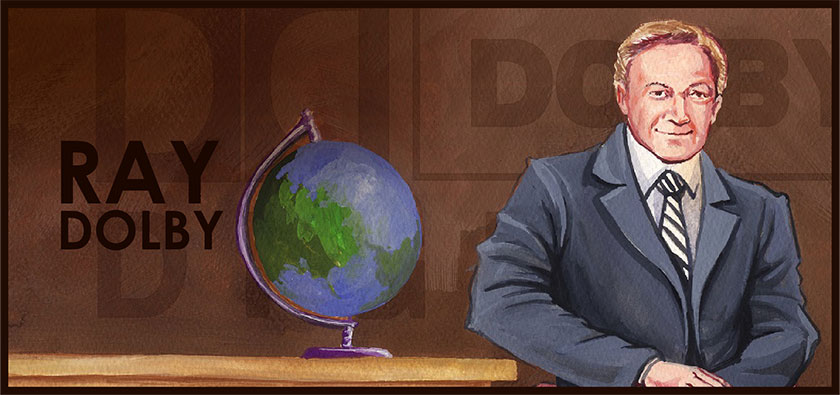
Each time we tune into our favourite music channel on our car stereo, watch a movie on television, play a video game on our android smart phone and tablet, or experience 3D digital cinema, we ought to spare a moment, reflecting upon the legacy of the indefatigable Ray Dolby, who turned his 'sonic dreams" into a magical reality. Ray's eye for creativity coupled with his knowledgeable grasp of the science behind the production of sound, led to the foundation of the entertainment industry. He aspired towards gravitating individuals to fantasy land with the intense life-like audio experience, created by his innovative team at Dolby Laboratories. The two mirrored ‘D’ characters, which is the logo of the famed Dolby Laboratories has become the trademark for audio excellence. Ray Dolby, dedicated his life to pioneering audio technology, and in-effect, built an industry committed to exploring the realms of sound, pushing us into the digital age of high -fidelity audio engineering. His quest for silence, as he endeavoured to flush out the annoying background hiss, inherent in analogue tape-recordings, made him a billionaire, and bore testimony to the time-tested adage that silence is indeed golden.

Ray Dolby was born to Earl Milton Dolby and Esther Strand on the 18th of January 1933, in Portland, Oregon in the US. His father, Earl worked as a salesman and the doting parents fostered an appetite for learning in their inquisitive son, who was fascinated by cars, bikes and all machines in general. The family relocated to California, while Ray was still a young boy, and his supportive parents enrolled him in school. At the age of ten, he played the piano, and was curious about how different instruments sounded. He then took up playing the clarinet, and was fascinated by the vibrations produced by the different reeds.
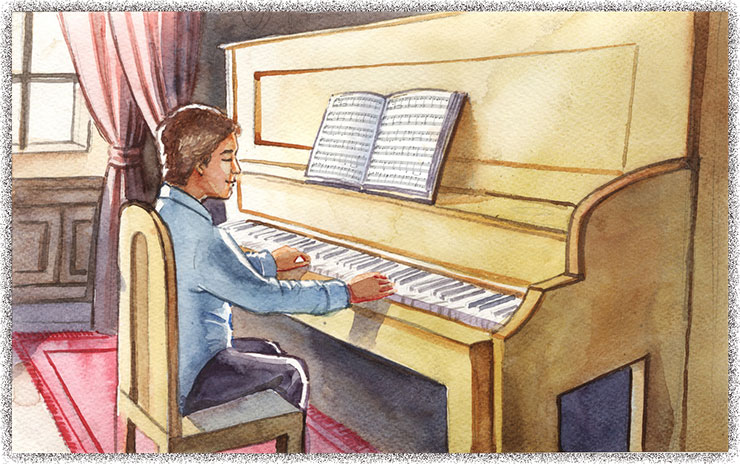
When he was eleven years old, he offered to service the pistons of his father’s 1932 Plymouth car. He started in the morning and finished off late in the night, and all this by himself. He constantly tinkered around scientific equipment, and was obsessed with how things worked. He was the geeky teenager, whom adults turned to for troubleshooting basic malfunctions in their appliances.
His ambition, when he was twelve years old, was to become a cameraman. He even had his own camera and projector, so he wrote to all those Hollywood schools that professed to train people to become cameramen. He had visions of glory, that of sitting on a boom and photographing some dramatic scene.
Ray who was fascinated by cars, bikes and even airplanes, was elated at his first flight at the age of fourteen, when his friend who received his flying license invited him for a ride! He dreamt of flying his own aircraft one day, but for the time being, he busied himself inventing; effectively pushing this desire into the farthest recesses of his mind, as flying was an expensive proposition for someone who was just at the threshold of making his career!

Ray who had a scientific bent of mind, was now at that crucial juncture in life, when a student is at the crossroads preparing himself for a rewarding career. He studied at the Sequoia High School in Redwood City, San Francisco, and now required to shortlist a steady option.
He was a brilliant student, and was way ahead in his credits in comparison to his peers. Hence, getting into college was never a primary cause of concern. It was during this transitory phase, that a chance encounter with the famous electrical engineer, Alexander Poniatoff, who set up “Ampex”– the company that pioneered audio tape recorders, played a pivotal role in defining his future career. Poniatoff was in Redwood City where he had come to show some movies to members of a mental-health society. He requested the Sequoia High School where Ray studied, for a projectionist. Ray volunteered, for a free meal and a payment of $5. After the movies, a high-level conversation on sound (Dolby had long since rigged up his own system) ensued between them.
Poniatoff invited the high-school student to work with him. Ray grabbed the opportunity, and joined the firm in 1949, when he was barely sixteen and still in school. He attended school for three hours, and worked at Ampex for five hours at a stretch, as an active member of the team that was working upon the new video-recorder.
He worked at Ampex while graduating from high-school and then served with the U.S. army as he was drafted for two years. Later, he resumed his work on the first practical video-tape recording system, while simultaneously pursuing a bachelor’s degree in electrical engineering from the Stanford University.
He graduated in 1957, and then left Ampex, as he had won a Marshall Scholarship and a fellowship from the National Science Foundation in Britain. He pursued his post-graduation in Physics from Cambridge and was the first American to be elected as fellow of Pembroke College.
Ray also served as a consultant to the United Kingdom Atomic Energy Authority, during his final year at the Cambridge University. He received his Doctor’s degree from Cambridge in 1961, when he was 28 years old. It was here that he met the beautiful Dagmar Baumert, a German student, and a friendship based on mutual admiration blossomed between the two. Ray now focused on securing a challenging assignment to give his career a head-start.

Ray responded to a newspaper advertisement by UNESCO, inviting applicants for the post of scientific advisor to the Government of India. The candidate while working as a representative of the United Nations would be responsible for establishing a national research laboratory, to develop scientific instruments. He was selected on merit and set off for India in 1963. Ray, being a music enthusiast, often invited sitar players to his home, and organised live recordings of their compositions.
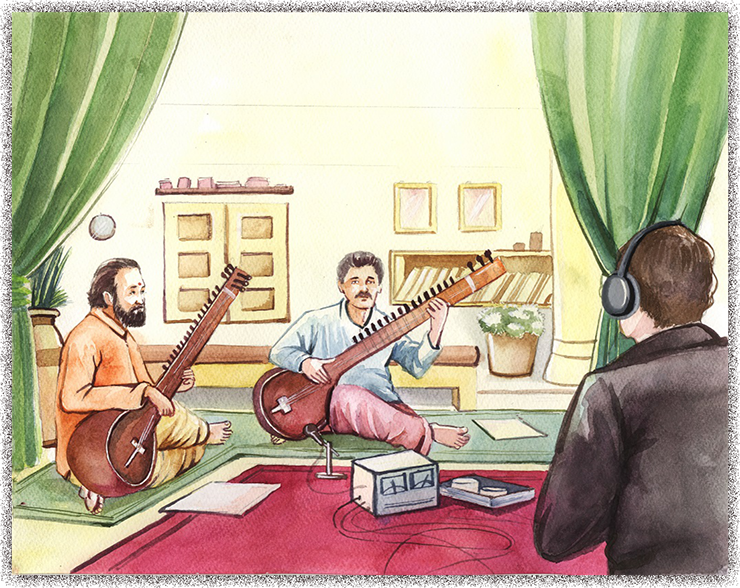
Much to his dismay, the playback failed to deliver clarity on account of the annoying background hiss that marred sound quality. The slower the tape speed, the louder the hiss. He resolved to work towards devising a scheme of noise reduction which silenced the background disturbance in analogue tape recording. This newfound clarity of purpose coincided with the completion of his first assignment and he ventured back to England.
He returned to London and set up Dolby Laboratories in 1965, with a mission of converting something as mundane as sound into an extra-ordinarily poignant experience. He married his sweet-heart Dagmar the following year, and immersed himself in revolutionising the music industry. A passionate problem solver, he described himself in the following words, “I’ve often thought that I would have made a great 19th century engineer, because I love machinery. I would have liked to have been in a position to make a better steam-engine, or to invent the first internal combustion engine; to work on the first car. All my life, I’ve loved everything that goes; I mean bicycles, motorcycles, cars, jeeps, boats, sail or power, airplanes, helicopters. I love all of these things, and I just regret that I was born in a time when most of those mechanical problems had already been solved and what remained were electronic problems.”

Ray Dolby had an artistic perception, and his vision of converting a sound-track which had hitherto been a mere accompaniment to the visual, into a soul-stirring medium capable of depicting an array of emotions, led to the birth of an entire industry. The aim was to create an experience such that “audio” was placed on an equal footing with “visual” expression. Ray’s technique consisted of playing with sound frequencies, which involved compressing and expanding them in order to produce crisper sound and enhance the performance of a basic audio-recorder to the level of a sophisticated stereo-system. In 1965, Dolby introduced the A-type noise reduction units for the professional market. Ray first tasted success, when Decca Records, an eminent recording studio placed the first order for nine units of the Dolby A-301 professional noise reduction system. In 1968, the innovative engineer launched the B-type home noise reduction system for consumer products. The very first record that used Dolby noise reduction was Ashkenazy playing Mozart. From here on there was no looking back for Dolby.
Film studios now began investing heavily in Dolby paraphernalia, to pamper movie-goers with a truly immersive experience. The 1971 film “A Clockwork Orange” by Stanley Kubrick, was the first film to use Dolby encoded sound, and the resultant appreciation was phenomenal. The Dolby brand was now synonymous with high fidelity sound. The birth of his first child and the daunting prospect of his child growing up in a British boarding school, was the deciding factor that made him shift his entire set to San Francisco, California, in 1975. This was a smart business move, as he was now in the heart of Hollywood. Dolby stereo technology, which was a high fidelity optical and magnetic soundtrack system, was now used for radio broadcasts in over a hundred radio-stations, all across the United States of America. The next breakthrough came, when George Lucas, the director of Star Wars entrusted Dolby Laboratories with the sound-effects. The impact of Ray’s pioneering technology can be gauged from the following words by director George Lucas, “Ray’s pioneering work in sound played a pivotal role in allowing ‘Star Wars’ to be the truly immersive experience I had always dreamed it would be. Not only was he an inventor with a passion for the art of sound, but that passion was combined with an incredible technical understanding of the science behind it all.” The genius inventor brought Star Wars to life as the brass-heavy orchestral score had a heart-rending effect in the absence of any background distortion, which hitherto blighted recording media. The final sound-track involved mixing of a hundred different tracks and the results were astounding. The inter-galactic combat sequences, transposed the audience into the mysterious realms of the universe, on account the multi-layered, soul-stirring sound track. Another 1977 blockbuster by the brilliant director Steven Spielberg, Close Encounters of the Third Kind, used Dolby sound to treat audiences with the all-enfolding sound of the spaceship which was given an emotional touch on account of the creative modulation synchronised by the engineers at Dolby Laboratories.

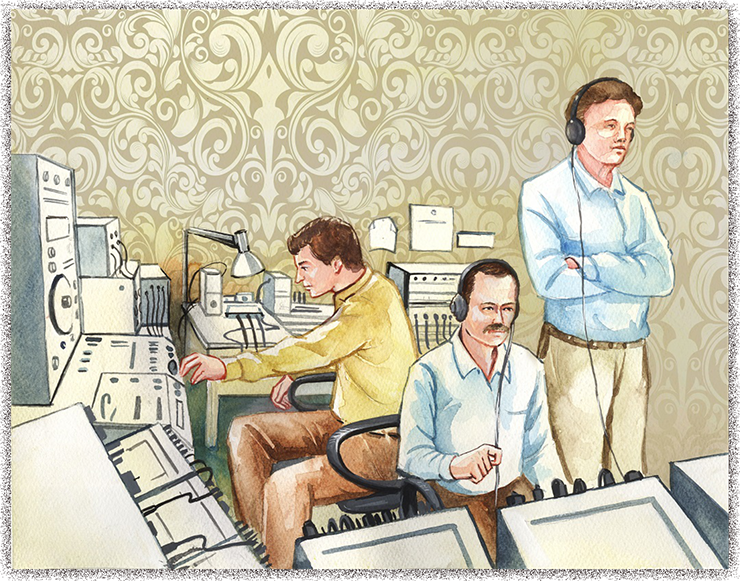
Dolby hired the best engineers and provided them with state of the art equipment in a flexible work environment. Dolby Laboratories was an engineering haven where inventors pushed the frontiers of audio-technology. They were given complete freedom from the constraints of commercial viability, and the burden of scouring for funds. The inventors ruled the roost at the Dolby Laboratories, which had a well-equipped library where Ray spent hours keeping himself abreast of competition and the latest global technological advancements in his industry.
Constant innovation gave birth to Dolby Surround Sound in 1982, which consisted of being enveloped in a stream of all enfolding sound-waves, where the texture of each individual component was preserved within the audio spectrum. This was followed by laborious research in the field of spectral recording. Ray Dolby spearheaded the launch of Dolby –SR in 1986. The Dolby system, which was a commercial success on account of the minimal cost of installation, was adapted by leading film studios and soon became an industry standard. Persistence and perseverance were the dual pillars behind the rise of Dolby Laboratories. In the words of Ray Dolby, “There is no major next step. It’s a matter of constantly being aware of one’s environment, of keeping track of what’s happening in the various industries that we’re operating in and just sort of sensing what’s possible and what’s not possible, what’s needed, what’s not needed – just having all your antennae going, sensitised to all the signals that are out there.” In 1987, Dolby Pro Logic enhanced the home theatre experience by bringing sophisticated technology to the consumer’s doorstep. Patrons could not stop raving about the innovative concept of enjoying a theatre like experience in the convenience of your home!

Industry recognition and numerous felicitations by premier institutes became a part of the illustrious life of Ray Dolby. In 1987, he was conferred the honour of the Most Excellent Order of the British Empire by Queen Elizabeth 2. In 1989, he received an Academy Award for his contribution to motion picture sound. Dolby was a fellow of the Audio Engineering Society and The Society of Motion Picture and Television Engineers. He was the recipient of the Alexander Poniatoff Gold Medal and Progress Medal. An Oscar statuette awarded in 1989 by the Academy of Motion Picture Arts and Sciences, was another feather in his cap.

At the age of 57, Dolby renewed his interest in flying airplanes and started subscribing magazines and journals which focussed on the aviation industry. His wife was alarmed, as the pursuit of a hobby, such as flying your own airplane and taking spins in the air, seemed far too dangerous, at the age when most people look forward to tranquil retirement. Medical clearance was an additional hindrance, since he had suffered a heart-attack six years earlier. Not one to be discouraged easily, he immersed himself in the pursuit, and described his experience in the following words, “I had to jump through some hoops with the FAA, because I had had a heart attack six years before. But I had changed the way I ate, got more exercise, and took the pills I needed to keep that from happening again. The medical approval took about three months, and as soon as I got my medical I soloed – in a 152 –which gave me a tremendous sense of elation. I had proved I could do it and went out and bought an airplane”.
At the age of 60, he bought a Cessna Turbo 206, which was followed by a TBM 700 in 1993. He had an accident at Truckee, Nevada County, California, when he attempted a rather tricky landing in his TBM 700. But the ceaseless optimist that he was, he resumed his helicopter flight training just two days later, and in great humility, admitted to learning valuable lessons from his accident. He flew all over the globe, right through the United States, Europe and Africa, successfully completing 15 Atlantic Crossings and added a Pilatus PC-12 to his fleet by 1999. His passion for flying went on to prove that Ray Dolby was a spirited man, who loved adventure and enthused his family with his vivacity.


Ray Dolby, who was essentially a caring husband and a doting father, often used his airplanes in order to visit his sons David and Tom who studied at Santa Barbara, and at the Hotchkiss School respectively. He was involved in researching colleges for his sons, and was a role-model to his children who have grown into successful individuals. Tom Dolby is an eminent author and spearheaded a crusade for the legalisation of marriages between homosexuals. David Dolby followed the footsteps of his inspiring father and is a successful businessman. Ray’s love affair with his soul-mate Dagmar was a tale of everlasting romance. Dagmar gave a glimpse of her undying love for her husband when she said, “Ray was generous, patient, intellectually honest and fair-minded. Forever curious, unafraid and oh so persistent, whether we were driving overland from India, flying his plane across the Atlantic or driving by bus around National Parks, he not only gave us an exciting life but was a fantastic role model for our sons”. The devoted couple, who seemed to be made for each other, never missed an opportunity to attend the gala openings of the San Francisco Symphony, and the San Francisco Opera.
A born leader and a patron of cultural concerts, he was a member of the Board of Governors of the San Francisco Symphony and San Francisco Opera. Nancy Bechtle, who was one of the Presidents of the San Francisco Symphony, once requested him for assistance in renovation and acoustic modification of the Davies Hall, acknowledged being touched by the humility of this brilliant engineer. This down-to-earth attitude is brought to the fore by the following statement by Nancy, “He was remarkably modest for a genius, I asked him if he would help us,” she said. “He said he didn’t know a lot about natural acoustics, only electronic acoustics. We had these endless meetings, and he would always ask the right questions of the acousticians, protecting us from making a mistake. When the hall reopened, the acoustics were perfect, and he wouldn’t take any credit.”

Ray Dolby epitomised continuous innovation and perseverance. The secret of his humongous success, can be attributed to his attitude of never giving up which is apparent in the following quote, “To be an inventor, you have to be willing to live with a sense of uncertainty, to work in this darkness and grope towards an answer, to put up with anxiety about whether there is an answer.” A thorough understanding of the market scenario, the key players, the strategy of competitors and a comprehensive marketing policy were the factors that contributed to his remarkable business acumen. The company diversified into physical audio accessories like headphones and speakers. His vision can be understood by the comment, “It’s not enough just to put one’s brand name on a product. You have to bring some new technology to the table. And it’s possible to think about veering off in many directions in one’s business, but I think you have to stay focused to stay in business. If you veer too far off the original track you can lose your way. We know the players in the business that we’re in, we know the manufacturers, and we know the distributors, we know how the business works”. In 1995, Ray Dolby was awarded the Technical Grammy Award, by the National Academy of Recording Arts and Sciences. The awards were accepted in a spirit of humility, by the man who followed his dreams and always listened to his inner voice, “I was never a gold-digger, or an Oscar-digger, or anything like that. I just had an instinct about the right sort of things that should be done in my business. So, all these things just fell into place.” In 1998, he captured the booming market of video game enthusiasts, by launching the first videogame with the interactive Dolby Digital 5.1 audio. This breakthrough, led to the adoption of Dolby Technology across play-stations all over the globe.

Dolby developed an advanced Pro Logic II technology in 2000, which was followed by continuous research in high definition encoding techniques. Honouring his commendable efforts in contributing towards the progress of society, Ray Dolby was inducted into the National Inventors Hall of Fame in 2004, in a solemn ceremony held at its headquarters at Akron, Ohio.
Another milestone in the rewarding history of Dolby Laboratories was attained in 2005, when the company went public on 17th February 2005, with an initial offering of 27,500,000 million Class-A shares. The opening bell in surround sound marked the financial debut of Dolby Laboratories, whose shares were traded on the New York Stock Exchange at an offer price of $18, pushing Ray Dolby to the ranks of a billionaire. His name figures on the Forbes 400 richest Americans with a fortune of over$2.4 billion. The entrepreneur never shied away from his social responsibility and donated a staggering sum of $5 million to California Institute of Regenerative Medicine, in June 2005.
In his quest for constant innovation, Ray Dolby introduced the Dolby True HD (High Definition) lossless coding, for high-definition video discs in the year 2005. This was huge leap forward, and set the ball rolling for the Dolby 3D Digital Cinema. The passion to excel in the field of business went hand in hand with the passion to patronise a noble cause which would benefit humanity as a whole. This streak of generosity and goodwill towards the less fortunate, led to a donation of $16 million to the University of California, San Francisco, in May 2006, for stem-cell research which would provide insight into the development of degenerative disorders that debilitate the lives of millions across the globe.

Dolby 3D digital cinema was officially launched in 2007. This was a unique experience, using advanced technology to view motion-pictures with the vivid images in pristine quality, exactly as envisaged by the creator. The advanced filter technology ensured a breath-taking experience, regardless of the viewer’s position in the theatre. This revolutionised the entire motion-picture industry as it captured the viewer into the picture, and the impact was an unprecedented level of intense gripping entertainment. Dolby Digital brought surround sound into the hands of people on the go, when it collaborated with leading mobile handset manufacturers to incorporate Dolby technology.
The next big step was the launch of Dolby Axon which enabled 3D video communication for online games within the next two years. The advantage for gamers is an unparalleled immersive experience, where game creators can precisely distribute sound delivery for enhanced entertainment. Dolby chaired his company for over 34 years since its inception in 1965 to his retirement in 2009. Dolby Laboratories bagged ten Academy Awards, 13 Emmy Awards and over 50 patents under his dynamic leadership. In 2010, he was felicitated with the Institute of Electrical and Electronic Engineers, (IEEE) Edison Medal, in recognition of his path-breaking innovations.
Dagmar Dolby, who has been his loyal companion throughout this eventful journey, emphasised that success followed Ray, on account of the fact that he did what he loved and loved what he did. Speaking admirably about her beloved husband, she said, “Ray really managed to have a dream job, because he could do exactly what he wanted to do, whichever way he wanted to do it, and in the process did a lot of good for many music and film lovers. And in the end, built a very successful company.” In 2010, Dolby Laboratories unveiled Dolby 7.1-channel surround sound in cinemas, which surpassed the previous Dolby 5.1, with its undoubtedly superior performance. This was followed by its practical application in evolving media. Dolby technology enhanced the home gaming experience with a collaborative technology sharing agreement with X-Box 360, which is a premier gaming console. The digital gadget is compatible with a library of games, movies and music albums for boundless entertainment. In January 2011, the philanthropists Ray and Dagmar Dolby gifted another $20 million dollars to the University of California, San Francisco, for the construction of the largest stem-cell research centre in the United States, at the UCSF Parnassus campus. This institute is named ‘The Ray and Dagmar Dolby Regeneration Medicine Building’, and is a boon for diagnosing and analysing a myriad of problems including birth defects, spinal cord injuries, Alzheimer’s disease etc., which are currently incurable and have a crippling effect on human well-being.

Dolby Atmos, introduced in 2012, prompted a wave of euphoria on account of its cutting edge innovative technology which revolutionised the field of audio-engineering. The use of overhead speakers was a dynamic re-invention of surround sound and it enabled sound engineers to produce sounds like raindrops, roars of animals, the galloping of horses or the whirring of the propeller in a helicopter from specific speakers in the cinema theatre. It enabled creative manipulation in the entire audio palette, and made sound designers ecstatic. The journey of a thousand miles indeed began with a single step taken by the young dreamer, Ray Dolby. His son, renowned author Tom Dolby, revealed the essence of his achievements by saying, “Though he was an engineer at heart, my father’s achievements in technology grew out of a love of music and the arts; he brought his appreciation of the artistic process, to all his work in film and audio recording.” His iconic stature in Hollywood, and the well-deserved appreciation that has been showered on him by the Sound and Motion Picture Industry, is evidenced by the fact, that the landmark theatre where the prestigious Academy Awards, which showcase the pinnacles of cinematic excellence are hosted, is renamed Dolby Theatre, in honour of Ray Dolby. The Dolby ballroom is the banquet where the post-event gala dinner is hosted. But the winner of the prestigious Lifetime Achievement Award, Ray Dolby, was waging a battle with Alzheimer’s and his health deteriorated further with the onset of a critical illness. He made his last public appearance at the age of eighty, in May 2013, when he received the prestigious George Gund 3 Award, from the San Francisco Film Society at the 56th International Film Festival.
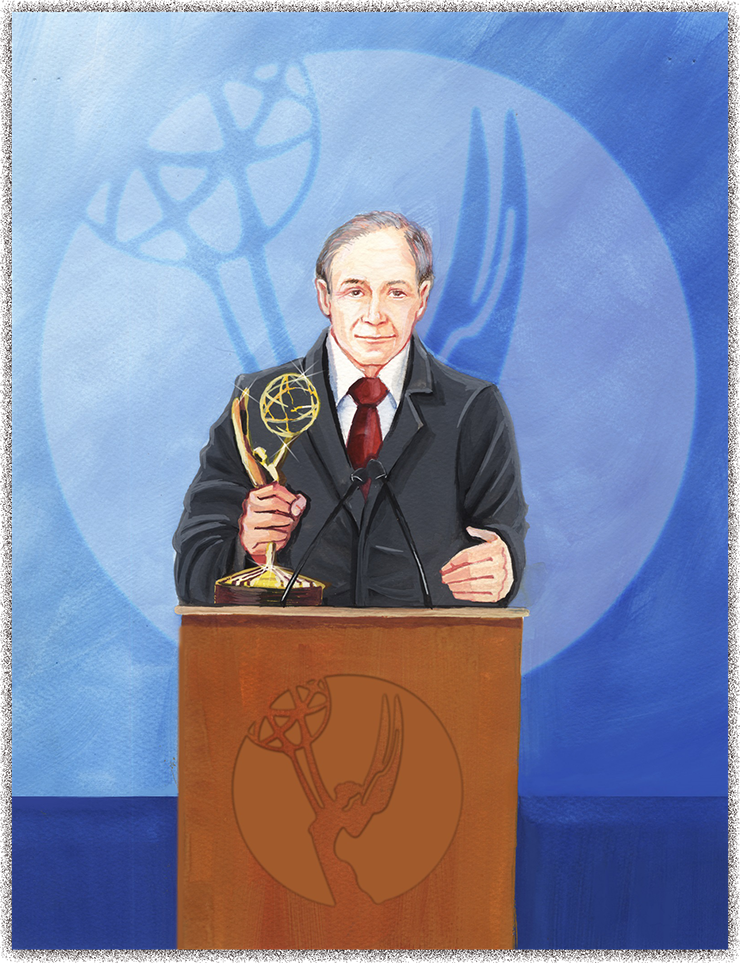

Ray Dolby who epitomised the sound industry was transposed into eternal silence, when he passed away on the 12th of September 2013, at his home in San Francisco. He was suffering from Alzheimer’s disease and was diagnosed with acute leukaemia, several months before he expired. David Dolby, his son echoed the sentiments of all his admirers when he thus spoke of their bereavement, “My father was a thoughtful, patient and loving man, determined to always do the right thing in business, philanthropy, and as a husband and father. Our family is very proud of his achievements and leadership. He will be sorely missed but his legacy of innovation will live on.”
Next Biography








